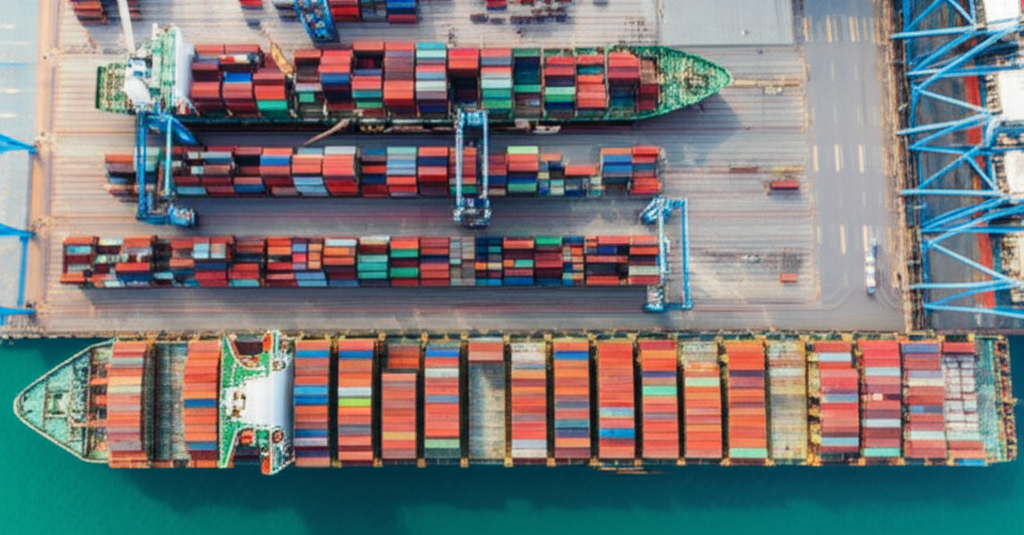A Deep Dive into China’s Trade Strategies and Their Global Implications
Introduction: July witnessed a dramatic surge in China’s exports, a phenomenon largely attributed to companies rushing to ship goods before potential new tariffs came into effect. This surge, however, wasn’t simply a matter of increased sales to the United States; it revealed a sophisticated and evolving trade strategy, one that leverages intermediary countries to circumvent potential trade barriers. This article will delve into the intricacies of this surge, examining its underlying causes, its wider global impact, and its potential implications for the future of international trade.
Context & Background: The trade relationship between China and the United States has been turbulent for years, marked by escalating tariffs and counter-tariffs initiated under the Trump administration. These measures aimed to address concerns about unfair trade practices, intellectual property theft, and the massive trade deficit the US holds with China. While some tariffs were rolled back under the Biden administration, the threat of new or reinstated tariffs remains a significant factor influencing Chinese export strategies. The imposition of tariffs created uncertainty and prompted Chinese businesses to explore alternative routes to reach US markets.
The July surge wasn’t just about quantity; it was about timing. Companies anticipated further trade restrictions and acted preemptively to avoid potential financial losses associated with higher tariffs. This preemptive behavior amplified the already substantial volume of goods exported, creating a significant short-term spike in export figures. The longer-term impact, however, is more nuanced and complex.
In-Depth Analysis: The surge in Chinese exports wasn’t uniformly distributed across all markets. A significant portion was redirected towards Southeast Asian nations like Vietnam, Malaysia, and Singapore. These countries often serve as “transit hubs,” where goods are processed, repackaged, or slightly modified before being re-exported to the United States. This practice effectively masks the Chinese origin of the goods, mitigating the impact of US tariffs.
This strategy highlights the increasing sophistication of global supply chains and the ability of businesses to adapt to changing trade policies. It also underscores the limitations of tariffs as a tool for influencing trade balances. While tariffs can increase the cost of imported goods, they can also incentivize businesses to find creative ways to circumvent them. This “trade deflection,” as it’s known, can undermine the intended impact of tariffs and potentially shift production patterns rather than reducing imports.
Furthermore, the analysis must consider the role of Chinese companies’ internal strategies. Many firms, anticipating potential future tariffs or aiming for better margins, likely adjusted their production and distribution schedules to maximize shipments before any anticipated deadline. This demonstrates a remarkable degree of adaptability and foresight within the Chinese export sector.
The massive trade imbalance between China and the US also needs attention. Even with the re-routing of goods, China still maintains a significant export surplus with the US, selling three times more than it imports. This persistent imbalance underscores the underlying structural issues within the bilateral trade relationship and highlights the challenges in achieving a more balanced trade partnership.
Pros and Cons:
Pros (primarily for China):
- Circumvention of Tariffs: Successfully mitigating the impact of US tariffs, protecting export revenues.
- Strengthened Relationships with Southeast Asian Countries: Increased economic engagement and interdependence with regional partners.
- Diversification of Export Markets: Reducing reliance on the US market as the sole destination for goods.
- Demonstrated Adaptability: Showcasing the resilience and resourcefulness of Chinese businesses in the face of trade challenges.
Cons (primarily for China and the global trading system):
- Increased Complexity of Supply Chains: The use of intermediary countries adds layers of complexity and potentially increases transportation costs.
- Potential for Mislabeling and Fraud: The practice of masking the origin of goods raises concerns about transparency and potential violations of trade regulations.
- Strain on Regional Infrastructure: The increased volume of goods transiting through Southeast Asia puts pressure on their port facilities and logistics networks.
- Unfair Trade Practices Accusations: The use of intermediaries may attract further accusations of unfair trade practices, escalating tensions.
- Potential for Backlash: The US or other countries may implement stricter regulations or monitoring to combat trade deflection.
Key Takeaways:
- The July surge in Chinese exports demonstrates a proactive and adaptable response to potential trade barriers.
- The use of intermediary countries highlights the limitations of tariffs in achieving desired trade outcomes.
- The persistent trade imbalance between China and the US remains a significant challenge requiring longer-term solutions.
- The surge underscores the evolving dynamics of global supply chains and their susceptibility to geopolitical factors.
- Transparency and adherence to international trade regulations are crucial in maintaining a stable and predictable trading environment.
Future Outlook: The future of Sino-US trade remains uncertain. The use of intermediary countries is likely to continue as long as the threat of tariffs or other trade restrictions remains. This trend could lead to further consolidation of regional trade blocs and the emergence of new trade patterns.
The increasing reliance on Southeast Asia as a transit hub may lead to a restructuring of regional supply chains, potentially benefiting some countries while placing strain on others. It’s also crucial to anticipate further measures from the US and other nations to combat trade deflection, which may include stricter origin labeling requirements, enhanced customs scrutiny, and potentially new trade agreements designed to address these tactics.
Furthermore, the long-term implications for global trade are significant. The increasing complexity and strategic maneuvering within international trade necessitates a reassessment of existing trade frameworks and a focus on greater transparency and cooperation among nations.
Call to Action: A more comprehensive and collaborative approach to international trade is needed. This requires a shift from protectionist measures towards strategies promoting fair competition, transparency, and mutually beneficial partnerships. Open dialogue, improved dispute resolution mechanisms, and a commitment to adherence to international trade rules are crucial in navigating the complexities of the global trading system and ensuring a stable and prosperous future for all nations.


























